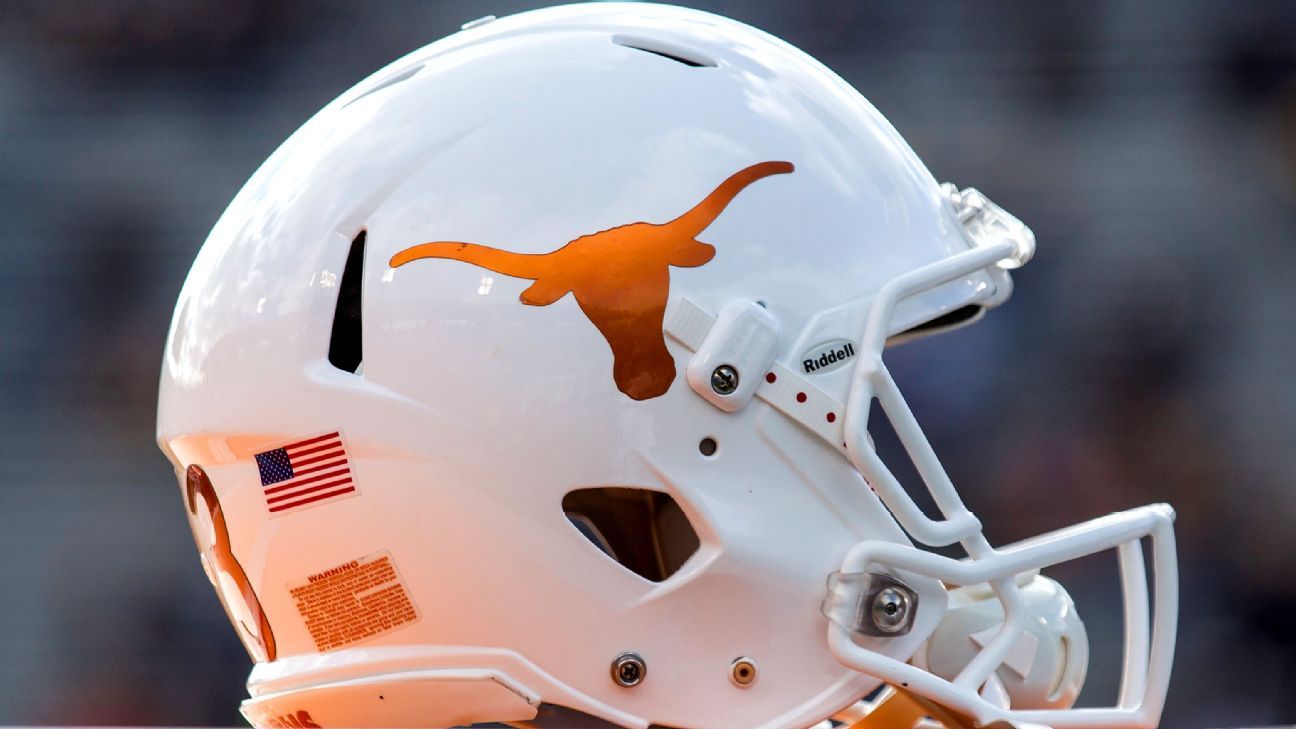The NCAA and the widow of a former Texas Longhorns football player reached an undisclosed settlement Friday on the third day of a civil trial in Dallas, in which the widow’s attorneys argued the NCAA was responsible for his brain injuries and death more than four decades after he played for the Longhorns.
Debra Hardin-Ploetz sued the NCAA for negligence and wrongful death in January 2017, more than a year after her husband, Greg Ploetz, died from brain injuries in May 2015.
Greg Ploetz, who played on the Longhorns’ 1969 national championship, was 66.
Her lawsuit was seeking more than $1 million in damages, according to court records.
The lawsuit was considered a potential landmark case because it was the first civil case in which an individual plaintiff argued that an organization didn’t do enough to prevent football players from developing brain injuries to make it to a jury trial.
“The settlement gives all parties the opportunity to resolve the case outside of a lengthy trial,” Donald Remy, the NCAA’s chief legal officer, said in a statement. “The NCAA does not admit liability as part of the settlement. We will continue to defend the Association vigorously in all jurisdictions where similar unwarranted individual cases are pursued. It is our hope that other plaintiffs’ lawyers recognize that this is one settlement in one case.”
Hardin-Ploetz’s attorney, Eugene Egdorf of Houston, didn’t respond to a request for comment from ESPN.
After his death, Ploetz’s brain was donated to the Concussion Legacy Foundation at Boston University, where doctors concluded that he had Stage 4 chronic traumatic encephalopathy (CTE), the most severe level of the degenerative neurological disease caused by multiple blows to the head.
In her complaint against the NCAA, Hardin-Ploetz’s attorneys wrote that her late husband “suffered numerous concussions and sub-concussive blows to the head” while playing at Texas, and that the NCAA’s “failure to take effective action to protect [Ploetz] from the long-term effects of concussions and sub-concussive blows to the head while he played NCAA football” contributed to his death.
Ploetz, from Colorado Springs, Colorado, played defensive tackle and linebacker at Texas in 1968, ’69 and ’71. He was named Southwest Conference Defensive Player of the Year in his final season.
“During all times relevant to this complaint, the NCAA knew, or should have known, of the long-term dangers of concussions and sub-concussive blows to the head regularly suffered by intercollegiate football players,” the complaint said. “The NCAA failed to initiate policies or rules necessary to protect Gregory Ploetz in the face of long-standing and overwhelming evidence regarding the need to do so.
“The NCAA failed to educate its football-playing athletes, like Gregory Ploetz, on the long-term, life-altering risks and consequences of head trauma in football. The NCAA failed to establish known protocols system-wide to prevent, mitigate, monitor, diagnose, and treat neurological disorders.”
The lawsuit said Ploetz suffered depression, memory loss, confusion, erratic behavior and increasing difficulty communicating with others before his death. He stopped teaching art classes after his symptoms worsened in 2009, according to the complaint.
In July 2014, the NCAA agreed to settle a class-action head-injury lawsuit by creating a $70 million fund to diagnose thousands of current and former college athletes to determine if they suffered brain trauma playing football, hockey, soccer and other contact sports. Unlike a proposed settlement in a similar lawsuit against the NFL, the NCAA’s settlement stopped short of setting aside money to pay players who suffered brain trauma. Instead, athletes can sue individually for damages, and the NCAA-funded tests to gauge the extent of neurological injuries could establish grounds for doing that.
The NCAA also announced in May 2014 a three-year, $30 million concussion study co-funded by the U.S. Defense Department. Plans called for initial data collection on about 7,200 athletes from 12 colleges, increasing to 37,000 athletes at 30 sites, with the aim of better understanding concussions and developing better prevention methods.
Information from The Associated Press was included in this report.
